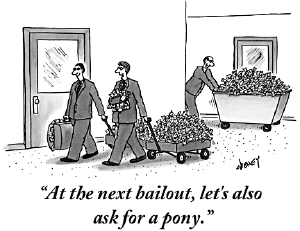At a 1977 rally on the Golden Gate supporting the
building of an anti-suicide barrier above the railing, a minister,
speaking to six hundred of his followers, tried to explain the bridge’s
power. Matchless in its Art Deco splendor, the Golden Gate is also
unrivalled as a symbol: it is a threshold that presides over the end of
the continent and a gangway to the void beyond. Just being there, the
minister said, his words growing increasingly incoherent, left him in a
rather suicidal mood. The Golden Gate, he said, is “a symbol of human
ingenuity, technological genius, but social failure.”
Eighteen months later, that minister, the Reverend Jim Jones, who had
decamped with his People’s Temple to Jonestown, Guyana, ordered his
adherents to kill themselves by drinking grape Kool-Aid mixed with
potassium cyanide. Nine hundred and twelve of them did. Every two weeks, on average, someone jumps off the Golden Gate Bridge. It is the world’s leading suicide location. In the eighties, workers at a local lumberyard formed “the Golden Gate Leapers Association”—a sports pool in which bets were placed on which day of the week someone would jump. At least twelve hundred people have been seen jumping or have been found in the water since the bridge opened, in 1937, including Roy Raymond, the founder of Victoria’s Secret, in 1993, and Duane Garrett, a Democratic fund-raiser and a friend of Al Gore’s, in 1995. The actual toll is probably considerably higher, swelled by legions of the stealthy, who sneak onto the bridge after the walkway closes at sundown and are carried to sea with the neap tide. Many jumpers wrap suicide notes in plastic and tuck them into their pockets. “Survival of the fittest. Adios—unfit,” one seventy-year-old man said in his valedictory; another wrote, “Absolutely no reason except I have a toothache.”
There is a fatal grandeur to the place. Like Paul Alarab, who lived and worked in the East Bay, several people have crossed the Bay Bridge to jump from the Golden Gate; there is no record of anyone traversing the Golden Gate to leap from its unlovely sister bridge. Dr. Richard Seiden, a professor emeritus at the University of California at Berkeley’s School of Public Health and the leading researcher on suicide at the bridge, has written that studies reveal “a commonly held attitude that romanticizes suicide from the Golden Gate Bridge in such terms as aesthetically pleasing and beautiful, while regarding a Bay Bridge suicide as tacky.”
Unlike the Bay Bridge—or most bridges, for that matter—the Golden Gate has a footpath adjacent to a low exterior railing. “Jumping from the bridge is seen as sure, quick, clean, and available—which is the most potent factor,” Dr. Jerome Motto, a local psychiatrist and suicide expert, says. “It’s like having a loaded gun on your kitchen table.”
Almost everyone in the Bay Area knows someone who has jumped, and it is perhaps not surprising that the most common fear among San Franciscans is gephyrophobia, the fear of crossing bridges. Yet the locals take a peculiar pride in the bridge’s notoriety. “What makes the bridge so popular,” Gladys Hansen, the city’s unofficial historian, says, citing the ten million tourists who visit the bridge each year, “is that it’s a monument, a monument to death.” In 1993, a man named Steve Page threw his three-year-old daughter, Kellie, over the side of the bridge and followed her down; even after this widely publicized atrocity, an Examiner poll that year found that fifty-four per cent of the respondents opposed building a suicide barrier.
The idea of building a barrier was first proposed in the nineteen-fifties, and it has provoked controversy ever since. “The battle over a barrier is actually a battle of ideas,” Eve Meyer, the executive director of San Francisco Suicide Prevention, told me. “And some of the ideas are very old, ideas about whether suicidal people are people to fear and hate.” In centuries past, suicides were buried at night at a crossroads, under piles of stones, or had stakes driven through their hearts to prevent their unquiet spirits from troubling the rest of us. In the United States today, someone takes his own life every eighteen minutes, and suicide is much more common than homicide. Still, the issue is rarely examined. In the Bay Area, the topic is virtually taboo. One Golden Gate official told me repeatedly, “I hate that you’re writing about this.”
In 1976, an engineer named Roger Grimes began agitating for a barrier on the Golden Gate. He walked up and down the bridge wearing a sandwich board that said “Please Care. Support a Suicide Barrier.” He gave up a few years ago, stunned that in an area as famously liberal as San Francisco, where you can always find a constituency for the view that pets should be citizens or that poison oak has a right to exist, there was so little empathy for the depressed. “People were very hostile,” Grimes told me. “They would throw soda cans at me, or yell, ‘Jump!’ ”


No comments:
Post a Comment